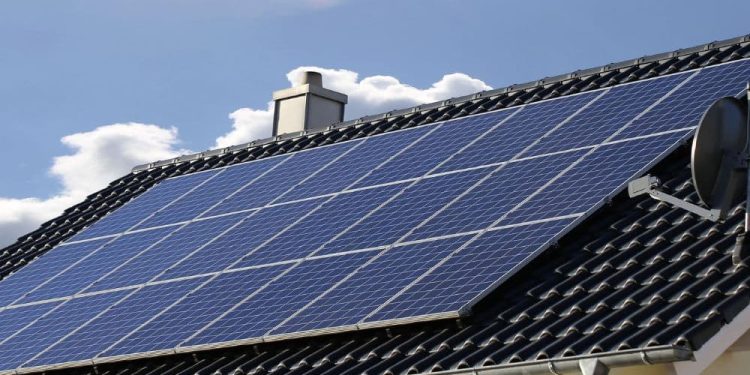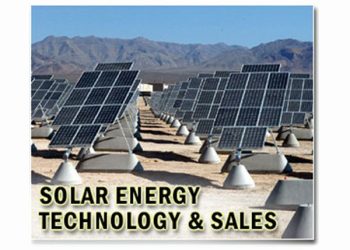Solar energy in Australia has surged in recent years as more households recognise the environmental and economic benefits of harnessing the power of the sun. Installing solar panels has become a popular choice, not only for reducing energy bills but also for contributing to a greener and more sustainable future.
However, as Aussies make the transition to solar power, questions often arise about the fate of excess electricity generated by these panels.
In this post, we will delve into the intricacies of what happens to the surplus energy produced by your solar system.
Electricity consumption and generation
To understand what happens to the excess energy generated by solar panels, it’s necessary to understand the dynamics of what goes on inside your household first. In Australia, homeowners rely on a variety of appliances and devices, with each drawing different amounts of power.
From lighting and heating to electronic gadgets and kitchen appliances, the daily energy demand is a composite of these diverse needs.
Several factors contribute to your energy consumption:
- Everyday electricity needs: This includes your lights, heating and cooling and electronic devices.
- Timing: Electricity usage isn’t the same throughout the day. Some periods, like evenings, when everyone is home, might see a higher energy demand.
- Appliance efficiency: Not all appliances are created equal in terms of energy efficiency. Some use more energy than others to do the same job. By considering the efficiency of your appliances, you can identify areas where you might reduce energy consumption.
- Solar system: Once you know your energy needs, you can select a solar panel system that matches your requirements.
How excess energy is fed back into the grid
Sending excess energy back to the grid is like giving back to the community. When your solar panels produce more power than your home needs, this surplus electricity flows back into the grid.
Imagine the grid as a two-way street. You draw power from it when you need it, and when you have extra, your solar power flows back to benefit others. This happens seamlessly through your grid connection.
To keep track of this give-and-take, smart meters are often installed. These meters measure the electricity you consume and the excess you contribute. This accurately accounts for your electricity usage and the energy you feed into the grid.
Feed-in Tariffs (FiTs)
FiTs are like a thank-you gift for your solar generosity. When you generate more solar power than you use, the extra electricity can be sent back to the grid. The government and electricity providers appreciate this, so they offer FiTs—a special rate they pay you for every unit of excess energy you share.
Essentially, it’s an agreement between you and your electricity provider or the government. It outlines the rate at which you’ll be compensated for the energy your solar panels contribute to the grid.
In fact, this is a win-win setup. Not only do you save on your energy bill by using your solar power, but you also get paid for the surplus energy you shed. It’s a bit like turning your rooftop into a small power plant that benefits both you and the larger community.
You will be compensated for every kilowatt hour (kWh) you export to the grid. If you live in Victoria you can expect a FiT of around 5c per kWh. Northern Territory and Tasmanian householders can expect a FiT of around 10c/kWh. Western Australians have drawn the short straw with a 3c/kWh FiT (as of Jan 2024).
Self-consumption and storage options
Think of your solar panels as your personal power plant. Maximising self-consumption means using as much of the electricity your solar panels generate within your home, rather than sending it back to the grid.
Here’s how you can make the most of the solar energy you produce:
- Time your usage: Try to use electricity-hungry appliances when the sun is shining bright. This way, you directly use the solar power your panels are producing, reducing the need to draw electricity from the grid.
- Smart appliances and timers: Invest in smart appliances and timers that let you schedule when they use electricity. This allows you to synch their operation with peak solar production time optimising your self-consumption.
- Energy-efficient upgrades: Consider upgrading to energy-efficient appliances. These use less electricity, making it easier to cover your needs with the power generated by your solar panels.
Battery storage solutions for excess electricity
There are times when you don’t need much electricity, and other times you need power when the sun isn’t out. This is where batteries come in—they’re like your solar savings account, storing excess energy for later use.
Solar batteries store the surplus electricity generated by your solar system. Some are better for short bursts of power, whilst others can store more for longer periods. Consider your household’s energy needs and choose a battery that aligns with them.
They can also work in harmony with the grid. Batteries can automatically switch between using stored energy and drawing from the grid, ensuring a steady power supply even when your solar panels aren’t producing.
Using your solar power directly reduces the amount of electricity you need to purchase from the grid, which will lower your bills. Additionally, self-consumption aligns with sustainability goals, as you’re relying more on clean, renewable energy.
When it comes to solar batteries, you get a backup power source during grid outages, ensuring continuous electricity supply.
Grid independence and off-grid systems
Exploring grid independence and off-grid systems highlights the potential scenarios where excess solar energy may not be sent back to the grid but instead used for self-sufficiency.
Off-grid living, for example, relies on storing excess energy for periods when solar production is low.
Grid independence
Imagine a home where your electricity doesn’t depend on the traditional grid—this is grid independence. Whilst it may sound like a futuristic concept, many are exploring the idea of relying solely on their own power source.
It means generating and using all the energy you need on-site, relying less on external sources. This provides a sense of self-reliance and control over your energy supply.
Achieving grid independence often involves a mix of renewable energy sources, not just solar. Wind, hydro, or even bioenergy can contribute to a diversified and reliable power supply.
To be grid-independent, you’ll likely need robust energy storage solutions like batteries to store excess energy for use during periods of low production or high demand.
Off-grid solar panel systems
An off-grid solar panel system is like creating your own little power universe. Unlike grid-tied systems that connect to the electricity network, off-grid systems operate independently.
They rely heavily on solar panels as the primary power source. These panels generate electricity during the day, and excess energy is stored in batteries for use during the night or on cloudy days.
Batteries are necessary in off-grid systems, storing excess energy generated during peak sunlight hours. This stored energy is then tapped into during periods when the sun isn’t shining, providing continuous power.
Some have backup generators for extended periods of low sunlight. This ensures a reliable power supply even during extended periods of low energy production.
Whilst grid independence offers a sense of autonomy and environmental sustainability, homeowners must carefully assess the challenges and considerations involved. A thoughtful approach, considering lifestyle adjustments, technical requirements, and potential drawbacks, is essential for a successful transition to off-grid living.
The bottom line
The journey of excess solar energy in Australia is a multifaceted process influenced by factors ranging from household consumption patterns to the intricacies of solar panel technology.
Understanding how solar panels generate electricity, the capacity of these systems, and the options for feed-in tariffs empowers homeowners to make informed choices about the fate of surplus energy.
Additionally, exploring self-consumption strategies, storage options like batteries, and even contemplating grid independence provides a holistic perspective on harnessing solar power efficiently.
As Australia continues to embrace renewable energy, the insights provided in this guide aim to guide homeowners in optimizing their solar investments, contributing to a more sustainable and resilient energy landscape for the future.
Energy Matters has over 18 years of experience in the solar industry and has helped over 40,000 Australian households in their journey to energy independence.
Complete our quick Solar Quote Quiz to receive up to 3 FREE quotes from trusted local installers – it’ll only take you a few minutes and is completely obligation-free.
















